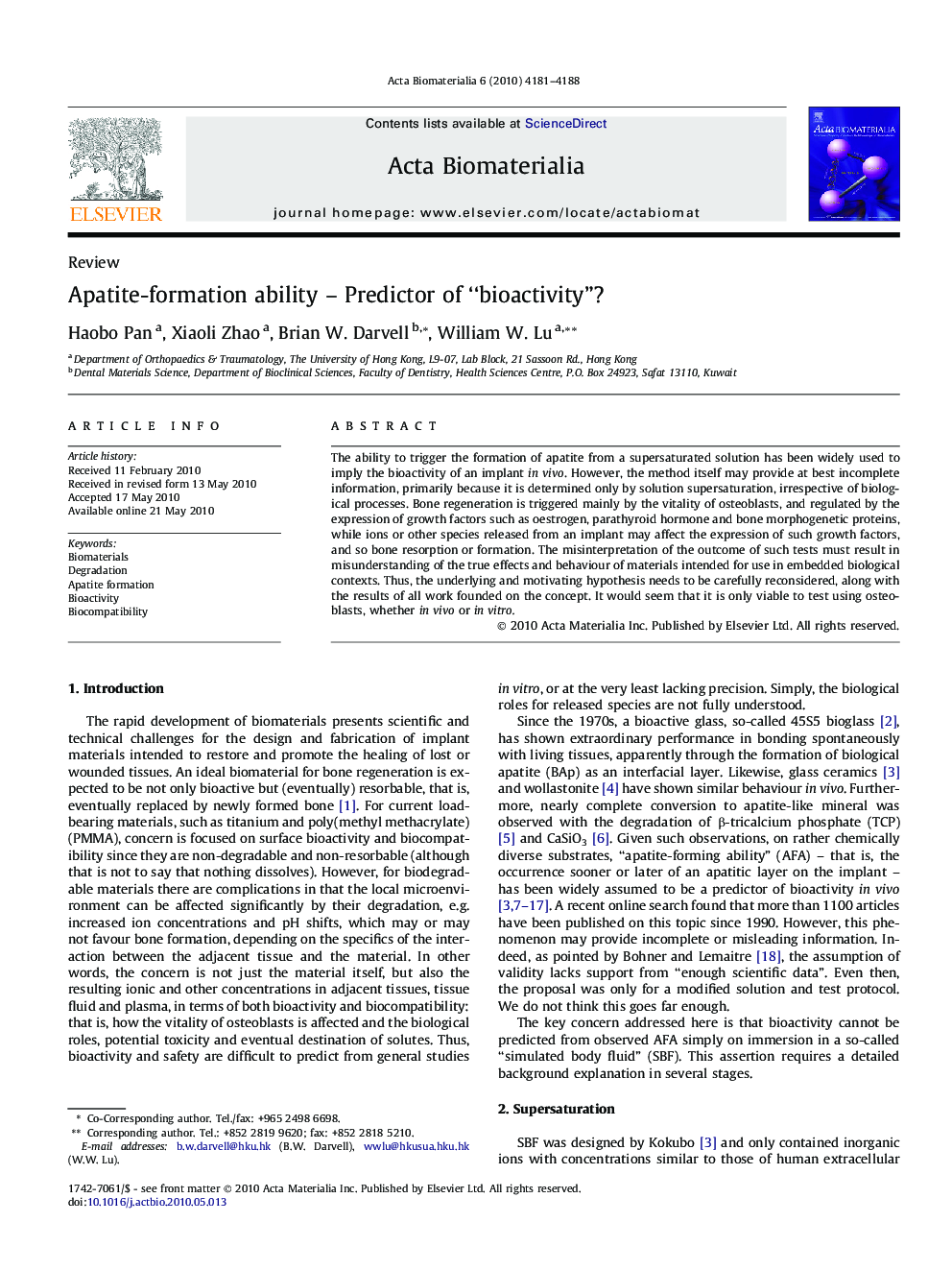| Article ID | Journal | Published Year | Pages | File Type |
|---|---|---|---|---|
| 1699 | Acta Biomaterialia | 2010 | 8 Pages |
The ability to trigger the formation of apatite from a supersaturated solution has been widely used to imply the bioactivity of an implant in vivo. However, the method itself may provide at best incomplete information, primarily because it is determined only by solution supersaturation, irrespective of biological processes. Bone regeneration is triggered mainly by the vitality of osteoblasts, and regulated by the expression of growth factors such as oestrogen, parathyroid hormone and bone morphogenetic proteins, while ions or other species released from an implant may affect the expression of such growth factors, and so bone resorption or formation. The misinterpretation of the outcome of such tests must result in misunderstanding of the true effects and behaviour of materials intended for use in embedded biological contexts. Thus, the underlying and motivating hypothesis needs to be carefully reconsidered, along with the results of all work founded on the concept. It would seem that it is only viable to test using osteoblasts, whether in vivo or in vitro.
